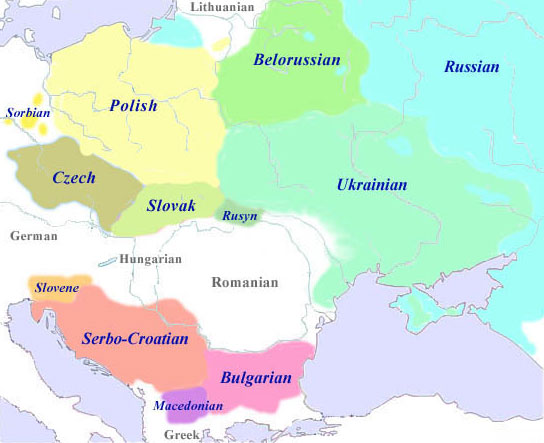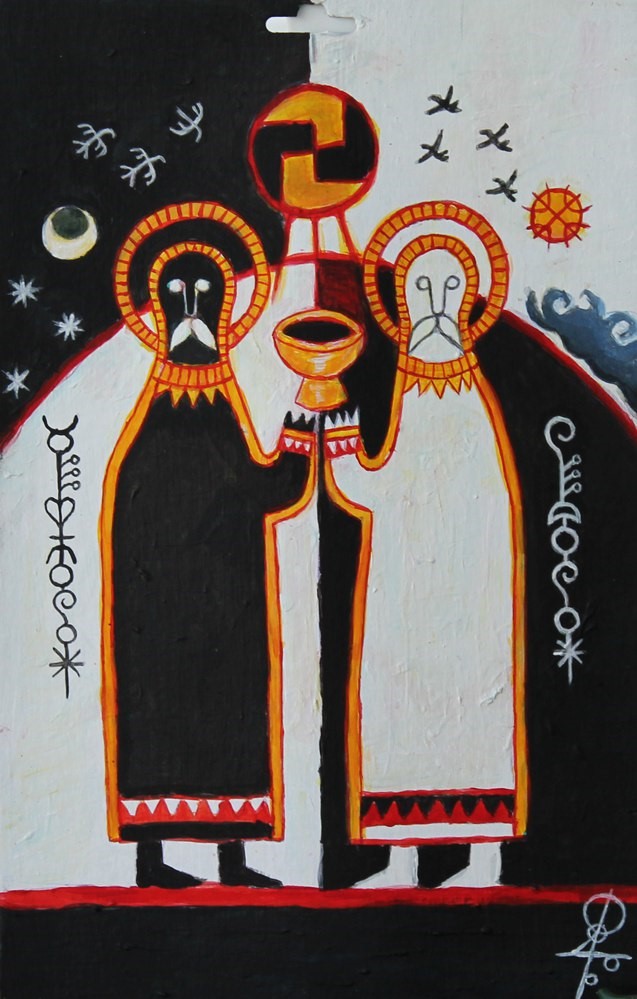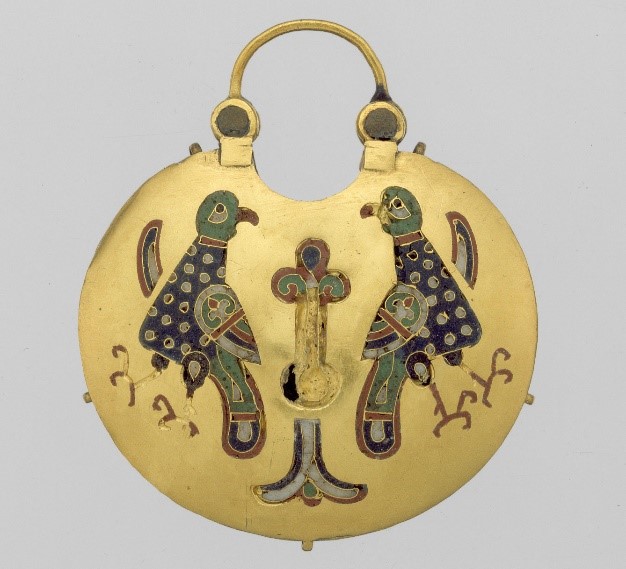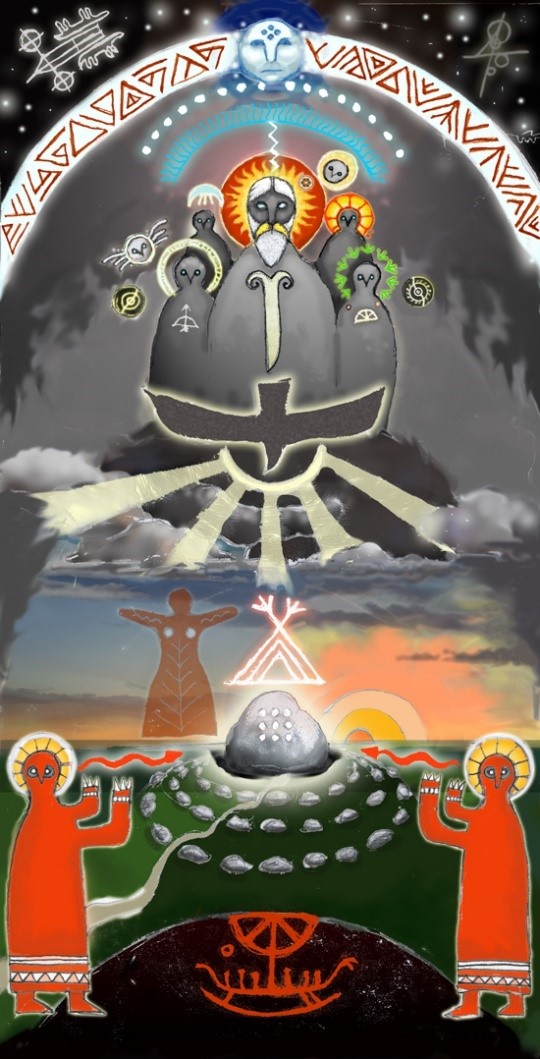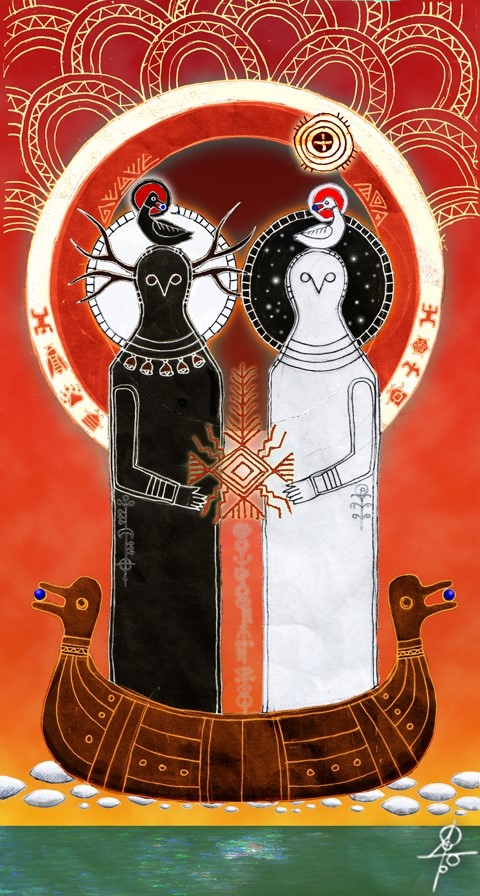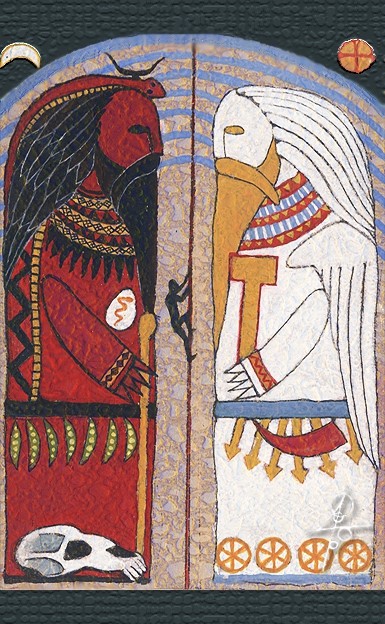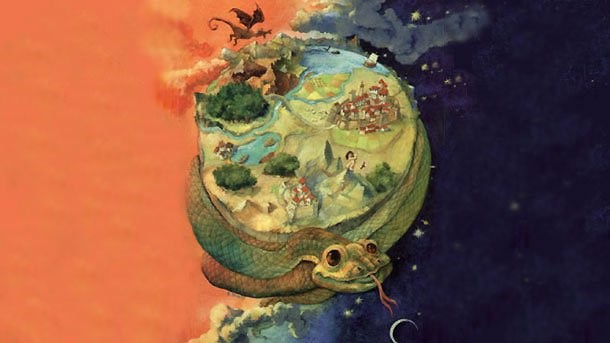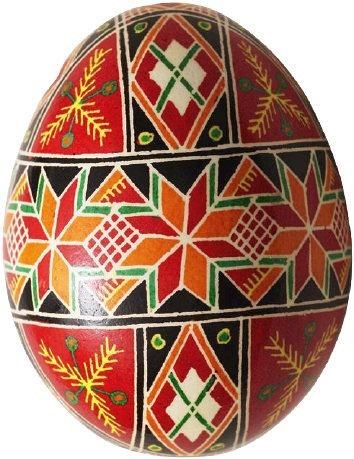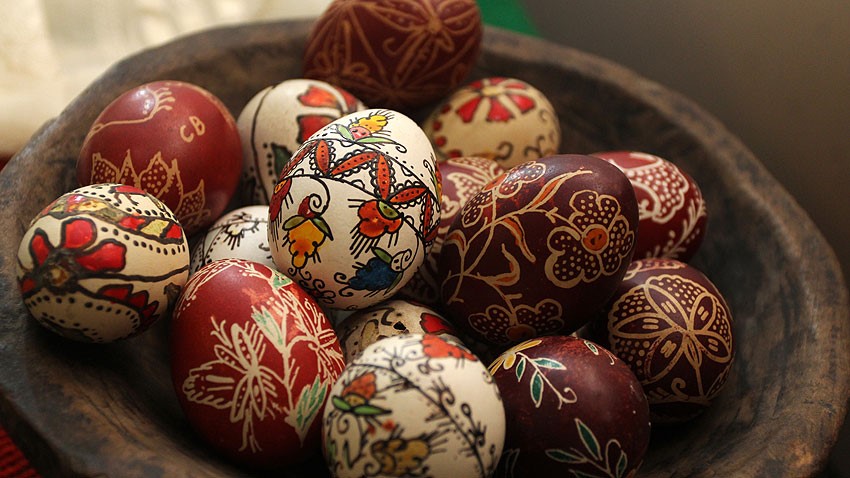This was the paper I gave at the Holy Books Conference: September 1-2, 2017 Bangkok, Thailand
“Holy Books and Creation Stories – In search of the Original Cosmic Design”.
“Creation stories in Slavic tradition” – Morgana, Netherlands
Since the 1950’s the neo-pagan movement has seen a renewed interest in pre-Christian beliefs, rituals, mythology and cosmology. In Europe and America, in particular, this has led to new, often reconstructed religions such as Wicca and Druidism. The most prominent influence has perhaps been the Celtic revival but when we look at creation myths it is to Northern Europe/Scandinavia and Euro Asia where we find the most vivid stories. In this paper, I want to look at Slavic Paganism and the creation stories in the Slavic tradition.
For the purposes of this essay I would like to restrict the classification of Slavic Tradition to the people who identify themselves as Russian or Bulgarian.
Slavic language has been classified as “a branch of the Indo-European family of languages, usually divided into East Slavic (Russian, Ukrainian, Byelorussian), West Slavic (Polish, Czech, Slovak, Serbian), and South Slavic (Old Church Slavonic, Macedonian, Bulgarian, Serbo-Croatian, Slovenian).
Concerning the link between Slavic and Sanskrit it appears there are similarities, although it appears Lithuanian (Baltic|) has more similarities. Gwiddon Harveston told me, “Lithuanian is even closer to Sanskrit than Russian, by far! Though not because Lithuanians are closer culturally to the Indians, but more because Lithuanian language is the most archaic – meaning it changed the least over the millennia”.
According to Gwiddon: The basic gist of creation stories in the “Russian” lands is one of three opinions:
– anthropomorphic version of creation – the world was created out of the body of a fallen giant. This is based on 17th century Apocrypha book “Golubinaya Kniga” (Eng. the Pigeon Book). A very similar story to Scandinavian’s Imir and Hindu Purusha[1].
– dualistic creation story – the world was created in a dynamic competition of light and darkness or black and white
– the Egg creation story – usually featuring ducks, geese, swans and other water fowl. However, this story may have come to Eastern Slavs from Finno-Ugric neighbours, where water fowl plays a large spiritual role, so not sure how universally Slavic that is.
He continues, by referencing the following article
“Eastern Slavic dualistic world creation legends” by Doctor Dmitriy Gromov, first published in the Russian- language magazine “Myth and magic of Indo-Europeans”, 11th issue, Sophia publishing house, Moscow, Russia, 2002. Many researchers claim that dualistic motives in Slavic folklore is due to influence of “eastern people” – Finno-Ugric, Altaic or Iranian (Avesta)[2], or Christian heretical (Bogumils in Bulgaria), thus dismiss dualistic motives as later additions. However, wealth of evidence points to much earlier archaic substratum of dualistic folklore across Slavic lands, much older than known foreign influences. Dr. Gromov looked at 300 folkloric mentions of world creation stories and found: 141 Russian, 75 Ukrainian, 27 Belarussian, 28 Bulgarian and 3 Serbian.
Common elements:
- Two gods creators – White God (WG) and Black God (BG), not necessarily good and bad, are visualised as birds (two ducks, geese or pigeons). God and a bird, water fowl usually. God and Satan (no animalistic features) God and Satan –as birds (duck or goose) who takes a bird form only when plunging into water etc. The animalistic image is probably more archaic.
- B) Gods are close friends or brothers, always together. Black God is often a creation out of a White God usually from a liquid (sea foam, spit, saliva, a sack filled with water). How a Black God was created by/out of a White God is often how creation stories begin.
(Contemporary impressions of the Black & White God, also known as Chernobog & Belobog by the Russian artist Maxim Sukharev)
- C) The first element in stories is how solid Earth is formed – initially, WG + BG: WG is flying in the sky while BG is swimming in the water or coming out of the water WG + BG both swim in the ocean WG + BG walk on top of the water. Or they both fly in the sky
- D) WG instructs BG to dive into the ocean to bring soil from the bottom of the sea – most common details – BG dives multiple times, often fails to bring soil due to not following WG instructions, not blessing the soil, not having enough strength. Material brought – clay, rocks, sand, often – and a mysterious “blue stone”. Holds it in mouth, in hands, in the nose or on the nose, in a beak (in bird form), under fingernails. The image of a bird holding a clump of soil in her beak is often found in early medieval art in Kievan Rus.
(NB Kievan Rus was the first organised state on present-day Russian territory. It is widely regarded as the spiritual predecessor to today’s Russian state.)
(Temple Pendant with Two Birds Flanking a Tree of Life (front) and Geometric Lead Motifs (back) – Kievan Rus, 1000-1200 AD)
- E) Next stage – Earth creation. WG takes soil from BG and creates land. Usually BG keeps some soil for himself to create his own land (hides the soil). WG creates good even flat arable land, BG creates uneven craggy, swampy, rocky land, not suitable for farming. Common elements – often BG creates earth when WG is asleep; WG creates earth which is too soft, asks BG to help him condense it from two sides, thus creating hills, etc. Motives of BG to create earth – jealousy of WG, desire to be “remembered and honoured”, to “be like WG”, or to help WG – by overcoming hardships of “bad lands”, men would thank the WG for helping succeed. Often WG and BG create stuff in pairs at the same time – WG created man, BG created a wolf, WG created a sheep (or cow), BG created a goat, WG creates wheat, BG creates weeds. BG is always worse at creation. Also, BG cannot breathe soul into created man.
- F) Next stage is creation of “angels and demons”. WG creates angels and BG creates demons most often at the same time – and most often in the same way – most northern tales (27 mentions) say demons and angels are created from sparks when hammer strikes the anvil, or the World Stone (cornerstone) Alatyr, world centre, or world tree; southern tales (16 mentions) speak of drops of water flowing from WG and BG hands to create angels and demons. Only slight details are different – WG uses right hand, BG left hand, or sparks fly to the right and the left, etc. WG blesses angels, BG does not know how to bless.
(Alatyr, Maxim Sukharev. Alatyr is a rock, which is described as white and fiery at the same time, and is the centre of the earth, so to speak, the cornerstone some say Alatyr is a version of the world tree. Alatyr comes from the folk tradition, because many folktales and magical incantations begin with – ” in the middle of the ocean stands white fiery Alatyr rock, and on that rock … and then follows either a magical formula for incantation or a folktale – was used in both)
- G) Next stage – competition for Heaven – WG and BG each build thrones in Heaven for themselves, ever higher, with help from angels and demons. Eventually BG builds throne so high he either – falls from it himself, or with help from WG and/or his angels. If WG gets his angels to do the work, then he most often gives them a spear, a club, a sword, arrows, or thunder and lightning. BG fights on often with fire. Once BG falls, he and his demons become “unclean” or evil.
(World Creation, Maxim Sukharev)
Obviously, ideas of competition and antagonism between WG and BG are heavily influenced by Christianity. However, archaic pre-Christian elements remain – WG and BG taking turns in making the earth, WG makes good land, BG bad land very similar to Iranian Avesta ; creation of angels and demons by striking or hitting something is very archaic and striking itself is associated with magical fertility (whipping in Ancient Rome, for example), also sparks. ; WG and BG antagonism parallels struggle between The Thunder God (Perun) – note that Perun bears a club, a hammer, and also arrows, and the Opponent (Often known as The Snake (dragon) – note that The Snake can also dive, as BG in bird form) ; also – motive of BG to become the adversary of WG is often pride, challenge to traditional role of servant, doing what traditions forbid and being punished for it – is a very common element in archaic folklore stories.
(Perun Volos, Maxim Sukharev. Perun is the Thunder God, Volos or Veles is the God of the Underworld, in a form of a bull or bear or sometimes snake a flying snake – sort of a dragon)
Creation of man (80 mentions) – a separate element. 11 times man is created by BG and WG breathes soul into man. Or BG creates man, while watching WG create angels, as a copy of angels, but still enlists WG help to breathe life into man. In a similar fashion legends speak of creating bears (bears are copies of angels by BG, but WG refused to animate them, so BG breathed his own soul into them, thus bears are almost like men but dangerous and have no human soul), and also bees – BG creates bees, but refuses to share honey with WG. WG could only make bumblebees, which did not produce honey, and WG was jealous. WG breathes spirit into a bee when over at BG house and makes her a Queen Bee – Queen Bee then takes off and flies over to WG house, taking all bees with her. Common theme – BG makes outer physical shell, WG breathes the spirit into it. Most often man is created from soil, clay, dirt. In Southern tales man is then dried out in the sun. Often (20 mentions) – man is composite of many elements – bones from stones, flesh from soil, hair from grass, soul from wind, blood from dew and sun, etc.
In the Bulgarian worldview, there was also the concept of 2 god-creators in this case God and the Devil
How was the Earth Created? (Как е създадена Земята Translated Martina Georgiev)
According to the Bulgarian traditional beliefs, in the beginning the Earth was flat. That’s how god created it. The folklore tales and legends say that later events occurred which lead to the change of its shape. Some of these interesting stories were written between XIX and XX centuries by the big Bulgarian ethnographer Dimitar Marinov.
Most of the myths and legends are based on the Biblical understanding of the creation of the world. The initial act of creation is illustrated in tales, full of animal characters, folklore mythology etc. One of them states that God created the Earth with the help of the devil – his then co-worker. Once there was only water, and God lived alone in the world. He walked one day and then he met the devil. He was happy that he finally has company and became friends with him. But they were quite lonely even together. Therefore, they decided to create the Earth and people. God sent his friend in the deep ocean waters. He told him to take some mud (in some tales sand or sea foam). From it he created the Earth and a throne, on which both could sit from time to time.
In the beginning our planet was small – big enough so that it could fit the throne. God covered it with the sky like a lid (that’s put traditionally on a clay pot used to bake bread). After he finished work, tired, the creator fell asleep on the throne. The devil decided to draw him while he was asleep so that the Earth would only be for him. He began to drag the throne towards the water, but he constantly couldn’t reach it. – the soil became more and more the Earth grew and its end was unreachable. The devil god scared and woke up God so that he would bless the Earth. And God told him: ‘I blessed it while I was asleep, and you were trying to drown me. Therefore, it grew so much.’ Then the devil understood that god sees, hears and does his deeds both asleep and awake. The devil felt embarrassed and his friend continued to work. He created the plants and animals, but the Earth continued to grow and the sky couldn’t cover it anymore. Then God hit here and there with his stick, the earth shaped, curved and he managed to cover it. The curves became mountains and valleys.
According to another legend, after he made a big plate of mud, he planted in the center a walnut, and afterwards he created the basil. He tied a swing on the tree and fell asleep. The continuation of the story is the same – the devil thought of drowning him, but he carried him away in his hands in the vast ocean.
According to the folklore belief the earth holds on the horns of a buffalo, turtle shell, or it’s positioned on the head of a bear, rooster or a fish. As flat as a pancake, it is surrounded by a snake which bites its tail – so that it won’t crack apart because of the heaviness of the people, animals, the mountains and the sea.
(How was the earth created… light and dark)
The earth has end according to the Bulgarian belief. It is called ‘end world’. It is so far that one would start walking towards it as a child and will reach it when he/she is an elder. And they still wouldn’t reach it. But there were people who still managed to reach it. At the end of the world there are Samovili, illnesses, dragons. There’s also the Sun’s castle.
Similarly, to other languages in Bulgarian the word earth means soil, ground. In the Bulgarian songs, legends and traditions the deep respect towards the earth that feeds people and after their death accepts them, has been preserved. Different rituals dedicated to the Earth have been preserved. Back in the days during the first harvest, the man necessarily went out in the field with celebratory clothes. He carried with himself white cottage loaf and took a piece of it and gave it to the field, wine vessel (if it’s not during fasting period) roasted chicken. First, he took a piece of the bread, threw a piece in the field and then gave to the ox. He ritually sprinkled wine over the earth. And only after this he would eat the food and started work. Similar non-blood sacrifice was done in the beginning of key agricultural activities.
The Cosmic egg – the source of life (from Martina Georgiev)
The belief that from the egg all or almost all cosmic elements have appeared is a common one. In the myths from all around the world from India, through China to Japan the egg is a reflection of the macrocosm. According to Shahnovich ‘the rounded shape of sky, sun and moon reminded people of the shape of the egg.’
In the folklore of the Slavic people the same idea has been preserved. Tales from the Czech, Polish and different parts of Russia tell of how the sun and the earth and the moon all came from the egg. The Bulgarian folklore has also preserved these ideas. These were preserved in the form of texts, riddles as part of children games. The support of this comes from two main lyrics of songs dated back to the 70s. The main ideas presented in the songs inform about the creation and the essence of the universe, for the everlasting processes of rebirth of nature, the initial material substance that is ever changing from one form to another. In the first song, the time is said to be a chicken. On the one hand, the chicken is a bird a domestic one and on the other the constellation ‘chicken’ (The star cluster Pleiades) or also known in the Bulgarian ‘folklore as the hen with the chicklets’. By looking at it the folk could determine if the seasons have change, is the winter close, to determine whether the year would be bountiful etc., which of course was crucial for them as they relied on the agricultural work.
Another connection between the egg and the star is also important to be mentioned. The stars are seen as symbols of potential vitality because of the comparison of stars to eggs. The eggs hold the life in itself, the eggs nested by the hens are symbols of life and from there the stars symbolize life as well. Folk riddles and Easter songs tell of the comparison of eggs to stars. According to the legend related to the constellation god saved a widow’s chicken and its chicklets from the flood by turning them into stars.
(Bulgarian Easter Eggs)
The Earth is also compared to an egg, this illustrates the idea that the earth is seen as part of space, that it is a star, and the earth –egg is also a star. But also, because according to the folk belief the earth is flat, but the main idea and reference is that the earth is an egg because it holds the life in itself. The affirmation that live is born in the same way as the chicken is born form the egg. The song also tells of the eggs as being colourful and red which points to the tradition of decorating eggs and dying them in red colour in the beginning of spring for Easter. In Christian mythology, the egg is a symbol of immortality. The tradition of egg decorating is related to the idea of resurrection and hope.
The second song illustrates the similarity between the egg and the sun. The relation of the sun with the egg here is that they are perceived equally as sources of life that constantly continue life and the life forces in nature. It is suggested by Afanasiev that the egg, as a metaphor for the sun and the lightning is perceived as a symbol of the spring and the rebirth of nature. When winter is replaced by spring the egg holds the seed of life and with the coming of spring from it new life emerges.
The texts of the songs further reinforce the concept that nature is eternal, the cycle of life, the motion is everlasting and the first material element is the egg itself. The egg is a symbol of conceiving which is combined with the female principle. A female name is mentioned in the text Mara – Maria also known as Fiery Maria – a famous Christianized character from the Bulgarian and Serbian folklore. This points also the connection and personification of fire as a source of life as well. The replacement of the female name with that of fire and also the indirect transition of the female figure with fire is found in texts from the Bulgarian population from Macedonia. The fertile function of the egg that lies in its main symbolism is also reflected in its symbolic engulfing and invisible transition from one form to another. This suggests not only the win of the next form from the previous and the metamorphosis of the egg. This motif could be seen in the Eastern Slavic (Russian) fairy-tales about Koshei Bessmertnyi (a bony old man, Koschei the Immortal) with the following plot: ‘The death of Koshei in an egg’ This is interpreted as portraying the binary concept of life and death. In comparison to the Bulgarian texts, the Bulgarian ones show only the connection with life and immortality.
The question why are these lyrics of songs in which we find substantial complex perceptions and associations have been determined as children games, as part of the folklore for children? It could be that the initial mythology and cosmogony of them has been lost gradually and they were further lead down to mere fun like and entertaining playful songs and games.
In Bulgaria, the Easter celebrations are related to the painting of hard-boiled eggs. This Christian celebration have never entirely replaced the pagan rituals associated with the welcoming of the spring. The painting of eggs and the perception of them as symbols of rebirth, immortality and spring and the beginning of life came from the egg are preserved in it.
“On the Egg in Bulgarian Folk Cosmogony” (Summary from the paper: by Lyubomir Mikov)
Some cosmogonic ideas connected with the egg and reflected in Bulgarian folklore are presented, analysed and made certain generalizations about in this article. The material investigated comprises oral and song folklore for, and performed by children, some folk notions and beliefs about the fundamental
celestial bodies – the sun, the moon some constellations, as well as the earth as part of the universe. An emphasis is also put on some notions related to the parts and the structure of the egg, in accordance to which it has been given meaning as a peculiar micromodel of the universe. The author notes in conclusion that the egg-related cosmogonic ideas in Bulgarian folklore reflects some folk views about the origin, structure and nature of the universe, and they also lead us to the original of the Easter egg in particular.
(In the beginning was the egg: the tradition of decorated Easter eggs in Bulgaria.)
These are just a few of the many motifs in Slavic Tradition concerning creation. In recent years, we have seen a revival of these motifs in contemporary art, especially amongst fantasy and reconstruction groups. I believe it was Joseph Campbell who described “mythology as the language of religion” and it is certainly the Creation Stories the world over which still inspire us and help us to understand our origin.
I am indebted to Gwiddon Harveston (Russian) and Martina Georgiev/ Israfela (Bulgarian) for their contributions to this essay. Many of the literary and academic works concerning Slavic traditions have not been translated into English. Their translations have been invaluable in helping me to gain further insights into the Slavic creation stories. Hopefully the accumulation of material for this essay will encourage us to continue our research into this fascinating subject.
References:
http://www.dictionary.com/browse/slavic [accessed June 23,2017]
http://www.metmuseum.org/toah/works-of-art/17.190.679/ [accessed June 23, 2017]
Temple Pendant with Two Birds Flanking a Tree of Life (front) and Geometric Lead Motifs (back) Date: ca. 1000–1200, Culture: Kievan Rus, Medium: Gold, silver, and enamel worked in cloisonné. Dimensions: Overall: 2 1/16 x 1 15/16 x 9/16 in. (5.3 x 5 x 1.5 cm) Classification: Enamels-Cloisonné – Credit Line: Gift of J. Pierpont Morgan, 1917, Accession Number: 17.190.679 This circular object known as a temple pendant, attests to the wealth and sophistication of medieval Kievan patrons. Fine cloisonné enamelwork adorned each of a pair suspended beside the face as part of the elaborate headdress of a Rus’ woman.
With thanks for the reproduction of the paintings of the Black & White God, (Chernobog & Belobog), Alatyr, World Creation and Perun & Volos by Russian artist Maxim Sukharev.
(Works cited by Martina Georgiev)
How was the earth created? Как е създадена Земята © БНР (www.bnr.bg) Прочетете текста тук – http://bnr.bg/radiobulgaria/post/100234221/kak-e-syzdadena-zemyata
Translated by Martina Georgiev/ Israfela June 2017
Daynova M., 2014. In the beginning was the egg: the tradition of decorated ester eggs in Bulgaria. Bulgarian National Radio. [online] Available at: http://bnr.bg/en/post/100397315/in-the-beginning-was-the-egg-the-tradition-of-decorated-easter-eggs-in-bulgaria%20Assessed%2024.06.2017 [Accessed 24.06.2017].
Mikov L., On the Egg in Bulgarian Folk Cosmogony. Central and Eastern European Online Library [pdf] Available at: https://www.ceeol.com/search/article-detail?id=22713 [Accessed 24.06.2017]
Bulgarian Easter eggs: https://nl.pinterest.com/pin/191121577906519543/
https://nl.pinterest.com/pin/553168766706422634/?lp=true
Russian wooden carved ornaments: https://www.123rf.com/stock-photo/old_slavic.html?mediapopup=15625981
[1] In one of the early creation myths related in the Rigveda, India’s oldest text, purusha is also the primal man from whose body the universe was created. https://en.wikipedia.org/wiki/Purusha
[2] The Avesta /əˈvɛstə/ is the primary collection of religious texts of Zoroastrianism, composed in the otherwise unrecorded Avestan language. (Wikipedia)

